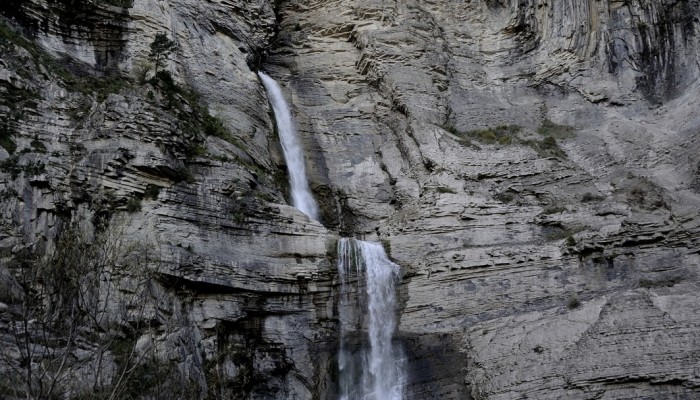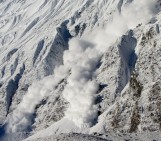
It’s fascinating how a relatively small outcrop, carved out by rivers and ancient ice, can reveal much about the geological history of an area. Today’s Imaggeo on Mondays post is one such example. Antonio Girona, a researcher at the University of Zaragoza, gives us a whirlwind tour of the geological history of the rocks revealed by the Sorrosal Waterfall, in Spain.
The visit to the Sorrosal Waterfall is an obligatory stop in your way to the Ordesa National Park, located in the Aragonese Pyrenees (NE-Spain). In the northern area of Huesca province, after a short walk from the town of Broto, this hidden waterfall can be found showing the geomorphological and geological history of the valley.
The Sorrosal Waterfall is located in the confluence of two valleys: Broto Valley, run by the Ara River (nowadays the longest river in the Pyrenees with 67 km) and Sorrosal Valley, a hanging valley 125 m above the position from which this photograph was taken. This waterfall was generated by the combined action of a glacier and the river. During the Ice Age, this site was covered by a 30 km long, 370 m deep glacier that shaped the valley that we nowadays call Broto Valley. At the same time Sorrosal river, fed by a small glacier in its headwaters, carved this valley transversely resulting in the Sorrosal Waterfall.
As a consequence of the slope between the two valleys, an interesting outcrop of geological interest can be observed. The rocks were originated from deep-marine sediments (turbidites) from the Eocene, which suffered a series of stepping folds as a result of the Pyrenees Alpine orogeny, becoming the wavy structure than can be appreciated nowadays.
By Antonio Girona Garcia, University of Zaragoza.
If you pre-register for the 2016 General Assembly (Vienna, 17 – 22 April), you can take part in our annual photo competition! From 1 February up until 1 March, every participant pre-registered for the General Assembly can submit up three original photos and one moving image related to the Earth, planetary, and space sciences in competition for free registration to next year’s General Assembly! These can include fantastic field photos, a stunning shot of your favourite thin section, what you’ve captured out on holiday or under the electron microscope – if it’s geoscientific, it fits the bill. Find out more about how to take part at http://imaggeo.egu.eu/photo-contest/information/.




